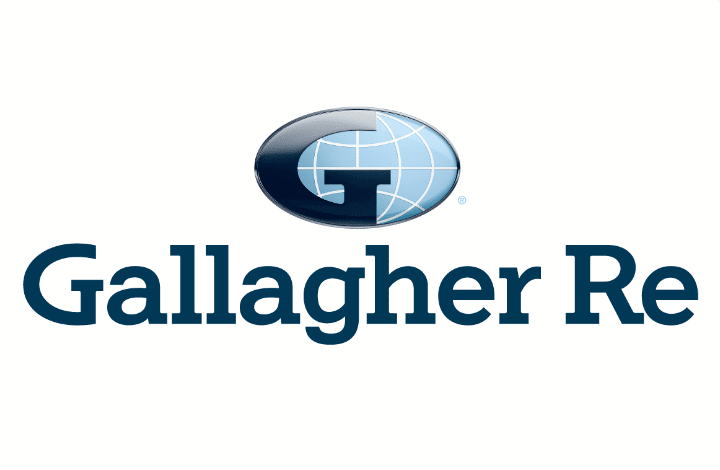2024 insured catastrophe losses to be above average. Gallagher Re says $108bn after Q3

Reinsurance broker Gallagher Re has reported that global publicly and privately insured catastrophe losses reached US $108 billion after the third-quarter, which once hurricane Milton and the rest of Q4 are added means the annual total for 2024 could be well-above the decadal average.
Gallagher Re said that the US $108 billion of insured natural catastrophe losses around the world came from an economic loss total of US $280 billion, another enormous protection gap.
Weather and climate-related loss events accounted for most of the insurance market impact, with the US suffering over 71% of the year’s insured losses through September, higher than the region’s decadal average.
The reinsurance broker said that a higher frequency of low to mid-size events, particularly in regions with higher insurance coverage, helped to drive the relatively high insurance market loss for the first three-quarters of the year.
Chief Science Officer at Gallagher Re, Steve Bowen, commented, “The recent landfalls of Milton and Helene in the United States – coupled with the significant third-quarter impacts from catastrophic flooding events in Europe, Asia and Canada – underscore the escalating volatility and intensity of weather and climate events.
“The global implication of compounded losses from these events highlights the urgent need for enhanced risk management strategies and innovative insurance solutions to better protect communities. It is clear that the industry and its collaborative partners must join forces to better adapt to this new normal of increasingly intensified natural catastrophe activity.”
Gallagher Re also provided an estimate for the public and private insurance market losses from recent hurricane Helene, saying it expects them to fall between $10 billion and $15 billion.
Hurricanes Beryl, Debby, and Francine—combined are also expected to cause approximately $8 billion in industry losses as well, raising the US hurricane season toll.
For the first three-quarters of 2024, weather and climate events accounted for US $103 billion, or 95%, of insured natural catastrophe losses, which Gallagher Re said is slightly lower than the decadal average of 97%.
A key driver was the fact that in the United States, the aggregate toll from severe convective storm (SCS) events topped US $50 billion for the second consecutive year.
Dr Iain Willis, Head of the Gallagher Research Centre, also said, “The reality is that the insurance industry is now having to adjust to the rapidly changing behaviours of natural catastrophe weather events due to a warming climate. We’re already seeing the effects of climate change more clearly now and the insurance industry needs to make the risk modelling of these hazards is keeping pace with their changing frequency and impact.”
Bowen added, “After an unexpected lull in Atlantic hurricane activity during the peak months of August and September, there was an expectation that the remainder of the season might experience an increased level of development. Hurricane Milton became the fifth hurricane to make landfall in the US this season; the second highest number of US hurricane landfalls on record. It was also the tenth major hurricane (Category 3+) to strike the continental US since 2017 after it went 11 consecutive seasons without one (2006-2016). This remains a peril where a single event can dominate annual industry losses.”
The US $108 billion total, for public and private insurance market natural catastrophe losses by the end of Q3, is already closing on the decadal average for the full-year.
Gallagher Re put the decadal average for global insured catastrophe losses at US $111 billion at the end of 2023, while the 21st Century average was lower at US $91 billion, a figure 2024 has already well-surpassed.
With hurricane Milton industry loss estimates already in a range from around US $27 billion to $51 billion, based on the average across estimates we’re received, 2024 insured catastrophe losses are set to end up well-above the decadal average it now seems.
Adding a rough mid-point of hurricane Milton losses, of $35 billion, to the Gallagher Re estimate for losses from Q1 through Q3 of $108 billion, already gets the industry to a significant $143 billion.
With plenty of weeks of the year still to run that would take the full-year total for 2024 higher still, it’s looking possible that $150 billion may be in sight for 2024, which would take the year well-above the decadal average (as reported by Gallagher Re).
There are clear ramifications for reinsurance pricing at the renewals, given the expectation of a now increasingly high catastrophe loss year for the industry.
In addition, the estimates of hurricane losses from 2024 so far suggest somewhere north of US $55 billion (perhaps considerably higher), of US named storm insured losses from across the Atlantic season, will also be a driver of reinsurance capital provider ambition to sustain pricing gains made at recent renewals there.






